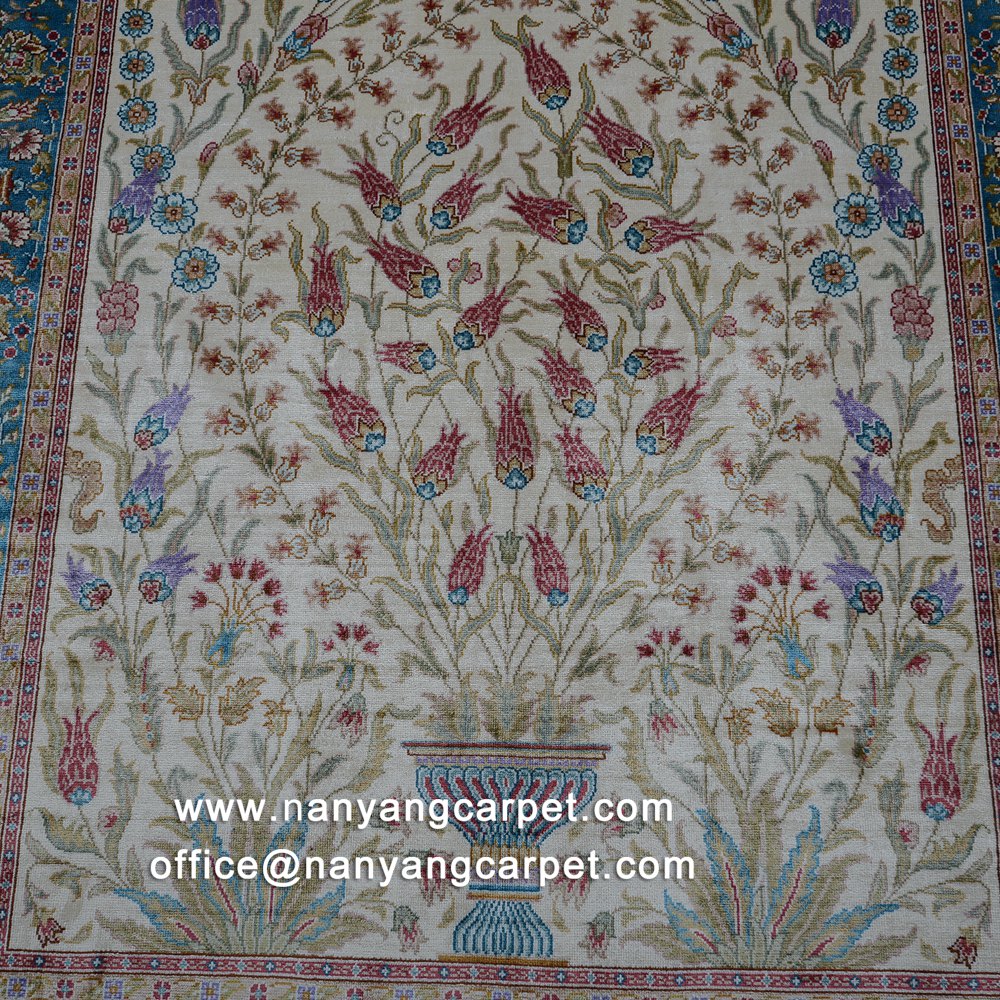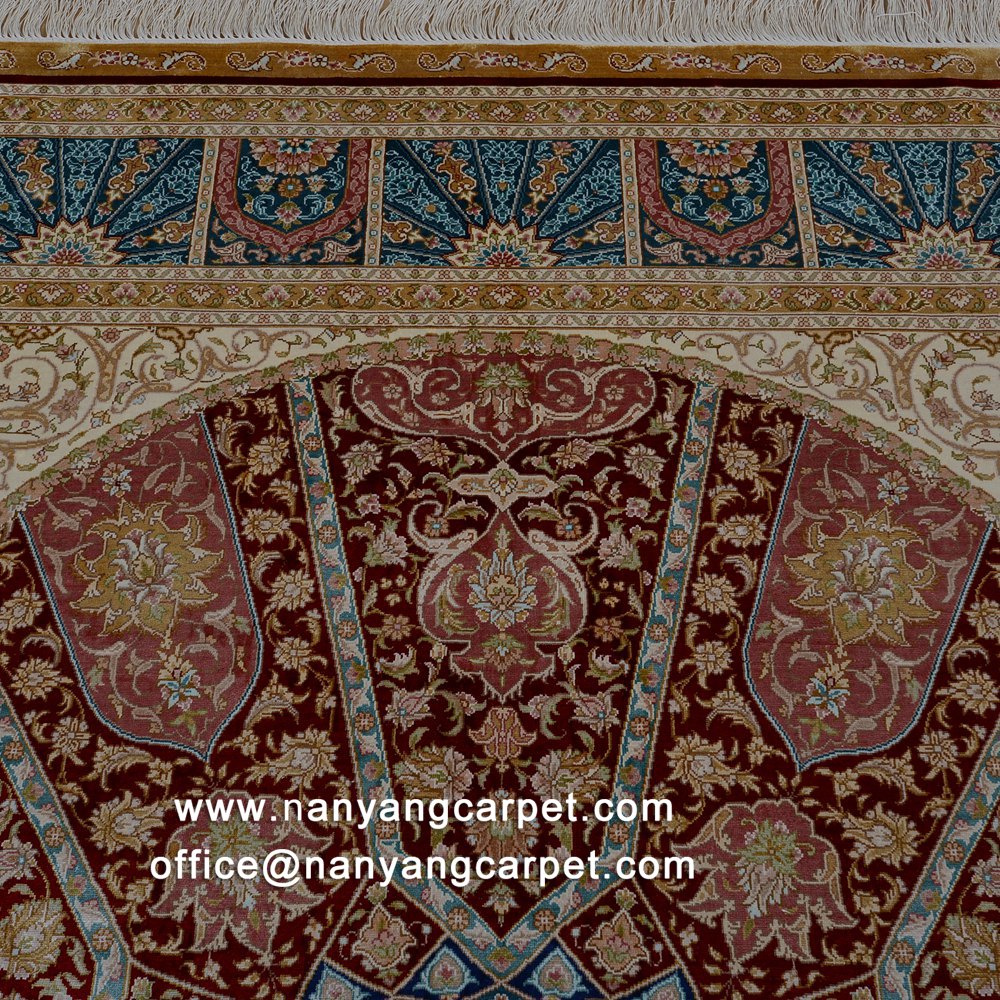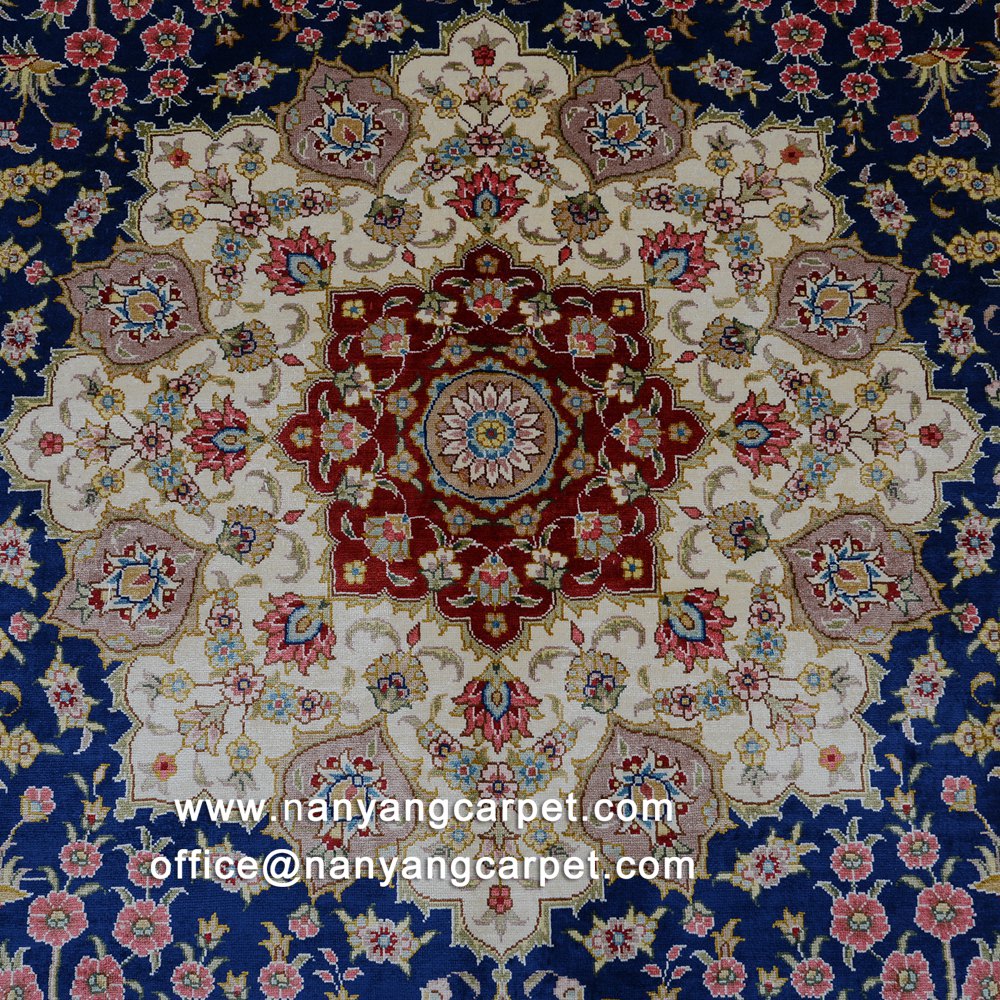The Indian woven carpets were originally derived from the traditional style and design of Persia. Later, it gradually incorporated into Mongolia and India's own art.
Indian carpets are recognized as the most traditional and complex. As India's carpet industry grows, it gradually has its own brand. The Indian Carpet is known for its exquisite patterns, stunning colors, exquisite craftsmanship and elegant design.
Red Indian Carpet

As we all know, India's carpet weaving process began in 500 BC, and weaving mats and carpets were created during the ancient Indian civilization.
However, the true Indian carpet industry began in 1500 AD. At that time, Indian society was in the period of Akbar (the Mughal Emperor of India (1556-1605), conquered most of northern India and promoted religious tolerance policy). At that time, Akbar captured many Persian craftsmen and brought them back to India to settle down. So the original weaving of the carpet originated from Persia, and it was gradually incorporated into Indian art. Therefore, the carpet produced at that time was the typical original Indian carpet.
Blue Indian Carpet

Subsequently, the Indian carpet industry began to diversify and was widely circulated throughout India.
At the earliest time, the basic raw materials for carpets were silk. Of course, carpets of different grades or uses were made of different types of silk. The patterns on the Silk Carpet are generally known as flowers, reptiles or birds.
flowers and birds design rug

The rug of the Akbar period has begun to use a weave of cotton and silk mixed, and has a blue, green or other color on the red background. These ancient Indian rugs originally used the Persian style, and the latter were mainly Indian style.
Blue on red background

In the era of Jahangir (the emperor was reigned from 1605 to 1627), Indian carpets have improved in production and design. The materials used have also changed. The most popular material at the time was Pashmina, a cashmere that could be knotted on the back of the carpet to hold the fluff on the back of the carpet.
Therefore, the details of the operations that can be performed on the carpet are increasing. Smaller patterns, floral patterns, and even watercolor paintings appear on Indian carpets.

During the period of the Mughal Dynasty`s fifth-generation emperor Shah Jahan (the world heritage Taj Mahal was Shah Khan`s mausoleum for his wife), the art of Indian carpet production reached its peak in 1682-58 AD. At that time, the use of high-quality silk warp yarns resulted in more than 2,000 knots per square foot. As the yarn process matures, the texture of the carpet woven with silk or Pashmina yarn is finer than goose down. The main element of the carpet pattern of this era is the flower.
Flower design of Indian carpet

During the period of Aurangzeb (King Hindustan (1658-1707), he introduced the Hui theory and expanded the territory), the development of the Indian carpet industry began to decline. However, the woven small carpet industry is still prosperous, mainly because the design of the large carpet is basically in harmony with religious beliefs, and often has a strong religious color. In this era, the carpet industry has made almost no progress. Materials, design and color are used in the forward direction.
Website: www.nanyangcarpet.com
Email: office@nanyangcarpet.com
WhatsApp/Phone: +86 150 3823 8579
没有评论:
发表评论